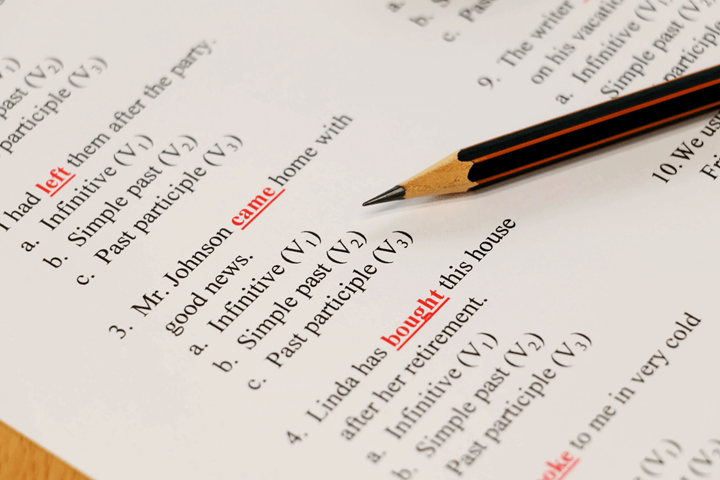Talking about events that have already happened is crucial in any language. In Arabic, the past tense is surprisingly straightforward once you grasp its core patterns. This article will be your guide to understanding the past tense in Arabic, focusing on how to form “past tense in Arabic words” and navigating the rules of “past tense in Arabic grammar.” Get ready to confidently express actions that have already occurred!
The Foundation: Understanding Past Tense in Arabic Grammar
The past tense in Arabic grammar is based on verb conjugations, where suffixes are added to the root form of the verb to indicate who performed the action. Unlike English which often uses auxiliary verbs, Arabic verbs largely carry the tense information within their structure.
- The Root: Most Arabic verbs are derived from a three-letter root that carries the core meaning. For example, the root ك ت ب (k-t-b) is associated with “writing.”
- Default Form: The basic past tense form of a verb is typically the masculine singular third-person (he did). For instance, from the root ك ت ب, we get كَتَبَ (kataba) – “he wrote.” This is your starting point for conjugation.
Conjugating Past Tense in Arabic Words: Who Did What?
Let’s see how the past tense in Arabic words changes based on the subject (who performed the action). We’ll use the verb كَتَبَ (kataba – he wrote) as our main example.
- He wrote: كَتَبَ (kataba)
- This is the base form of the verb.
- She wrote: كَتَبَتْ (katabat)
- Add تْ (-at) to the end.
- You (masculine singular) wrote: كَتَبْتَ (katabta)
- Add تَ (-ta) to the end.
- You (feminine singular) wrote: كَتَبْتِ (katabti)
- Add تِ (-ti) to the end.
- I wrote: كَتَبْتُ (katabtu)
- Add تُ (-tu) to the end.
- We wrote: كَتَبْنَا (katabnā)
- Add نَا (-nā) to the end.
- You (plural masculine) wrote: كَتَبْتُمْ (katabtum)
- Add تُمْ (-tum) to the end.
- You (plural feminine) wrote: كَتَبْتُنَّ (katabtunna)
- Add تُنَّ (-tunna) to the end.
- They (plural masculine) wrote: كَتَبُوا (katabū)
- Add وا (-ū) to the end.
- They (plural feminine) wrote: كَتَبْنَ (katabna)
- Add نَ (-na) to the end.
Key Observation: Notice that the changes primarily happen at the end of the verb. Once you learn these suffixes, you can apply them to many regular Arabic verbs to form their past tense.
Examples of Past Tense in Arabic Words in Sentences
Let’s put the past tense in Arabic into action with some common verbs.
- He went – ذَهَبَ (dhahaba) :
- I went to the market. – أَنَا ذَهَبْتُ إِلَى السُوقِ (ʾanā dhahabtu ʾilā as-sūqi.)
- They went to school. – هُمْ ذَهَبُوا إِلَى المَدْرَسَةِ (hum dhahabū ʾilā al-madrasati.)
- He ate – أَكَلَ (ʾakala) :
- She ate the apple. – هِيَ أَكَلَتْ التُفَاحَةَ (hiya ʾakalat at-tuffāḥah.)
- We ate dinner. – نَحْنُ أَكَلْنَا العَشَاءَ (naḥnu ʾakalnā al-ʿashāʾa.)
- He drank – شَرِبَ (shariba) :
- You (masc.) drank the water. – أَنْتَ شَرِبْتَ المَاءَ. (ʾanta sharibta al-māʾa.)
- You (fem. pl.) drank the juice. – أَنْتُنَّ شَرِبْتُنَّ العَصِيرَ (ʾantunna sharibtunna al-ʿaṣīra.)
Irregularities in Past Tense in Arabic Grammar
While the patterns for regular verbs are consistent, like any language, Arabic has some verbs that behave differently. These often involve verbs with “weak” letters (أ, و, ي) in their root.
- Verbs with ‘weak’ letters: For instance, the verb قَالَ (qāla – he said) or جَاءَ (jāʾa – he came) will have slightly different conjugation patterns due to the presence of ‘weak’ letters in their roots.
- Memorization and Practice: The best way to master these is through exposure, memorization, and consistent practice. Don’t let them discourage you – the regular patterns cover a vast majority of verbs!
Conclusion: Mastering the Past for Future Conversations
Learning the past tense in Arabic is a significant milestone in your language journey. By understanding the core patterns of past tense in Arabic grammar and practicing how to form past tense in Arabic words, you’ll gain the ability to narrate past events, share experiences, and engage in richer conversations. So, take these tools and confidently talk about everything that has already happened!
Ready to unlock more Arabic grammar and vocabulary? Download the Kaleela app today and continue your journey towards fluency!



